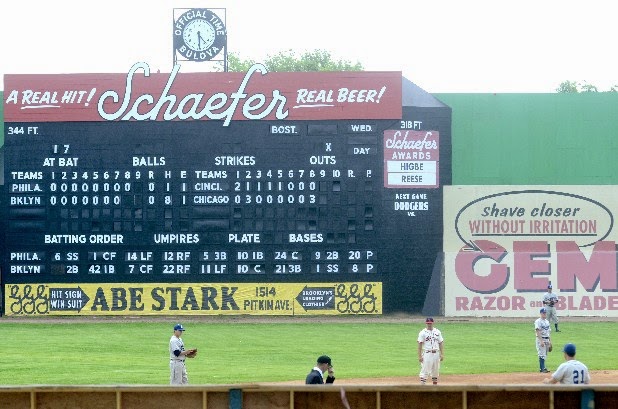Going back several decades, Gilligan's Island featured Schaefer ... kind of. Remember Mrs. Thurston Howell, III aka Lovie? The actress' name was Natalie Schafer. Her name was spelled a tad differently than the beer, but I'll allow it.
Plus, I'm betting with the S.S. Minnow headed out for what was expected to be just a 3-hour cruise that the Captain had some cold Schaefer for the passengers to enjoy. Wouldn't you think? They were likely the first things consumed once the seven castaways washed up on the beach of the island.
Schaefer Ring of Honor member ZimRick tipped me off to the appearance of Schaefer in HBO's series called Girls (though he claims his fiance was the one who noticed - whatever). I have no clue what it's about - though I'm guessing girls. I've never watched an episode, Googled it, or anything. Yet apparently at least in one episode a girl enjoyed a cold Schaefer. I'm in! Wait..does HBO even air this show anymore? Will it cost me a subscription?
From the TV screen to the silver screen.
How about the 1981 erotic thriller Body Heat featuring Kathleen Turner in her vixen era ... and Schaefer beer with its timeless taste. Bill Hurt's character, Ned, enjoyed Schaefer with company in the diner - including Ted Danson a year before he began starring in Cheers.
Ned just sounds like the name of a Schaefer drinker, and I'm betting in the early 1980s one could still order a Schaefer at the Bull & Finch Pub on Beacon Street in Boston.
Near the beginning of the 1971 Gene Hackman classic, The French Connection, a Schaefer sign is clearly seen above the jukebox in the Oasis Bar & Grill in Brooklyn (HT to SHOFer Uncle Dave).
A fantastic mob movie ... with a strong message of family values (?) ... is 1993's A Bronx Tale. I've got Godfather parts 1 and 2, Goodfellas and Casino in my top 5 of best mobster movies. Number 5 slot is generally in play, but A Bronx Tale from 1993 is right there in the discussion. One, the Robert DeNiro-directed movie has a great script, deals with difficult subjects, juxtaposes differing ways of life, etc. Two, Schaefer gets prime visibility in a couple of scenes including...
- The beatdown of the motorcycle gang in the bar.
- The neon sign in the window of the Chez Bippy restaurant controlled by Sonny and his henchmen.
- The original
- The cinematic reproduction
I've also been told Schaefer was featured in the 2014 movie, Jersey Boys. I haven't seen it yet - nor have I found an image or video clip. Pass one along if you can confirm!
2015-08-17 edit
Window of Jake LaMotta's bar in the closing scenes of Raging Bull. (HT to UDR)
TMC

























































